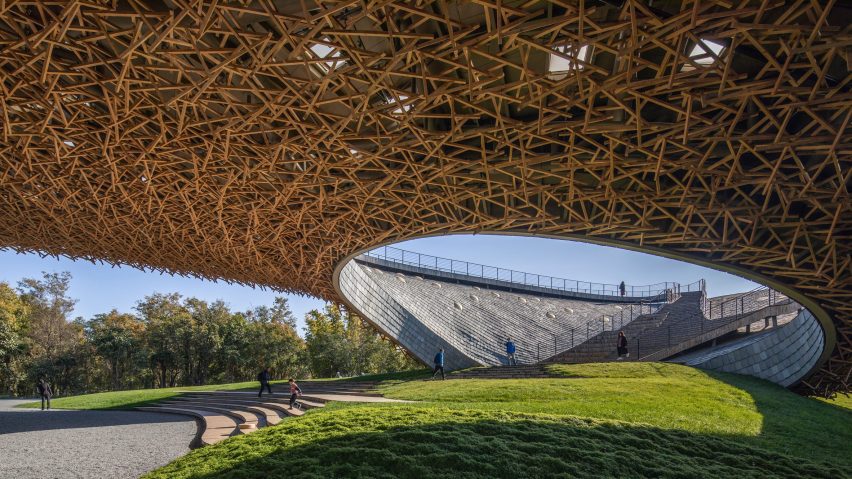
Curving roof incorporates seating at Yang Liping Performing Arts Center
Architecture office Studio Zhu-Pei has completed a performing arts centre in the Chinese city of Dali featuring an undulating roof that incorporates viewing areas and seating.
The arts facility was commissioned by local professional dancer Yang Liping for a site to the northeast of the city's historic centre, where Beijing-based Studio Zhu-Pei has also designed a museum of contemporary art.
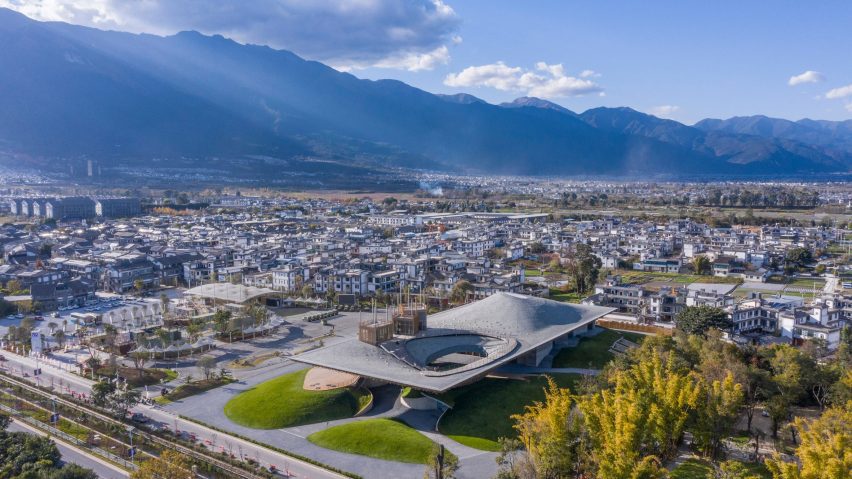
The design of the Yang Liping Performing Arts Center was directly informed by Dali's surrounding landscape, which includes the Cang mountain chain and Lake Erhai.
The building has a rectangular roof that spans a landscape of free-flowing indoor and outdoor spaces, including performance areas that blur the boundary between landscape and stage.
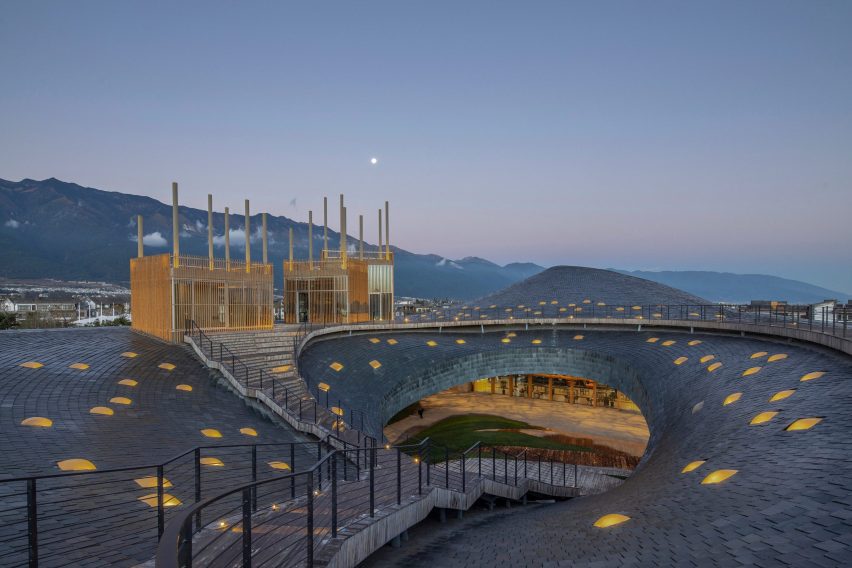
The slate-covered roof has an organic profile informed by the outline of the surrounding mountains. The structure merges with the partly sunken garden spaces, creating a sense of connection between the ground and the roof.
"As with mountains and valleys, the strong shape of the roof reflects the more organic landscape below and points to the old Chinese principle of yin and yang, where two opposites combine together to form a whole," the studio explained.
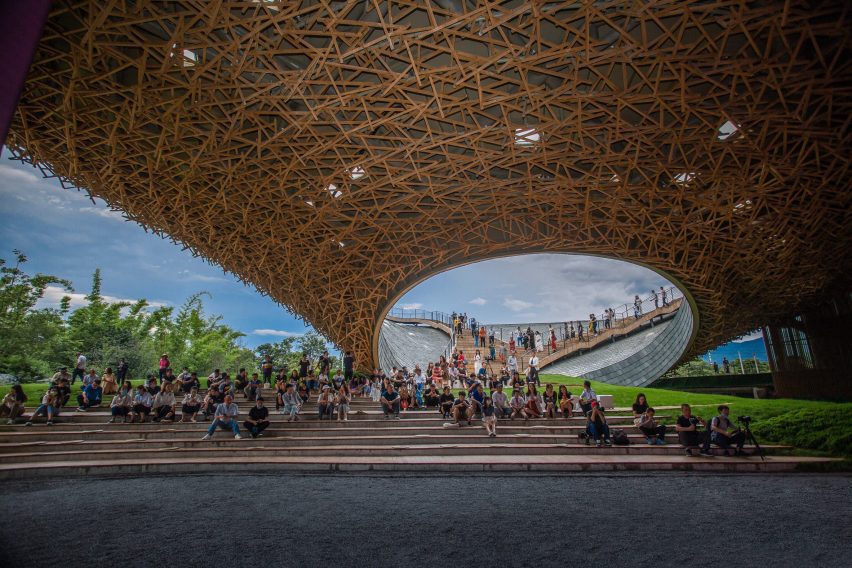
A plaza that weaves through the Yang Liping Performing Arts Center intersects with a concrete volume containing the main theatre, allowing its stage to be opened up to the outside.
Outside the main auditorium, a set of steps that ascend onto the roof provides casual seating for viewing performances taking place on the indoor stage or in the plaza.
The roof structure is covered on its underside by wooden battens arranged in a nest-like composition. Skylights incorporated into the canopy allow daylight to filter through the wooden structure.
A cluster of treehouse-like towers extends through the canopy, connecting the ground level with a viewing area on the roof. These contain a cafe and a private teahouse.
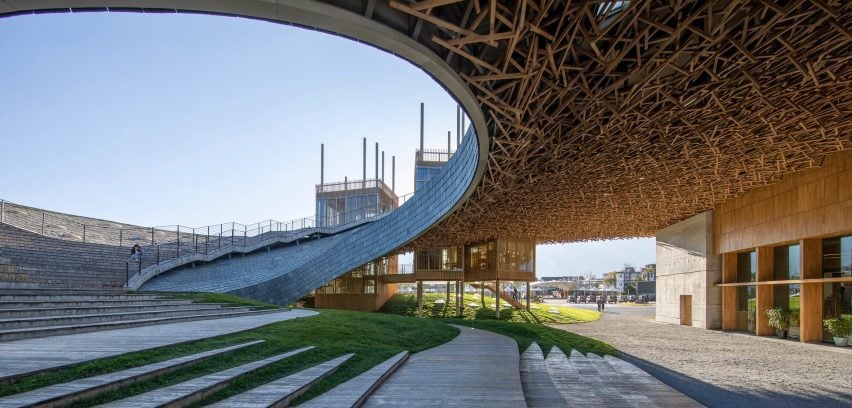
The gently undulating landscape surrounding Yang Liping Performing Arts Center includes grassy areas that extend out towards the surroundings.
Beneath some of the turf-covered mounds is a basement level containing a rehearsal space and service areas.
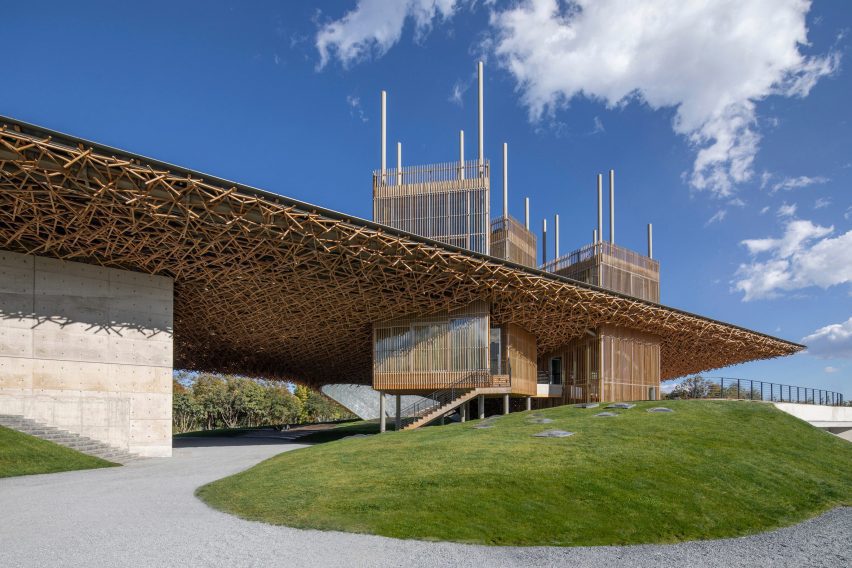
Studio Zhu-Pei was founded by architect Zhu Pei in 2005. Its previous works include a contemporary art museum in a former Beijing factory and a museum dedicated to ceramics production that features vaulted structures made from red brick.
Photography is by Jin Weiqi.